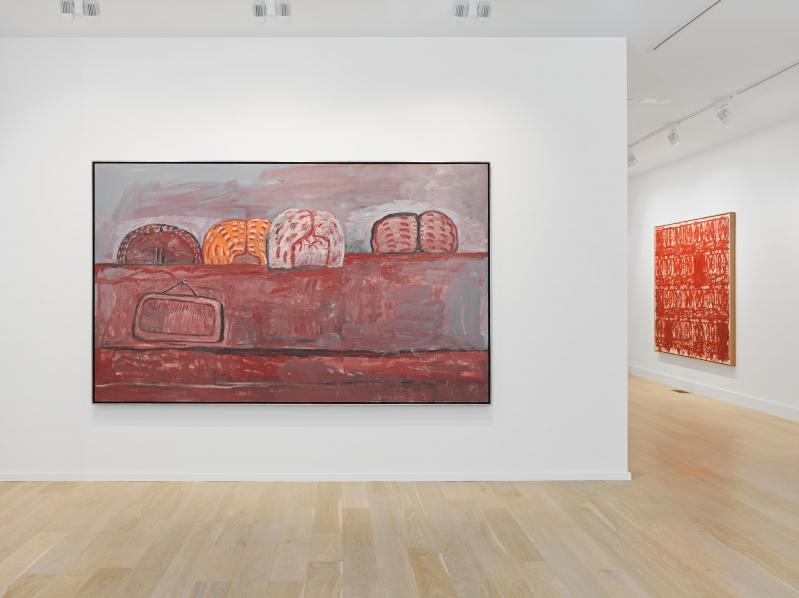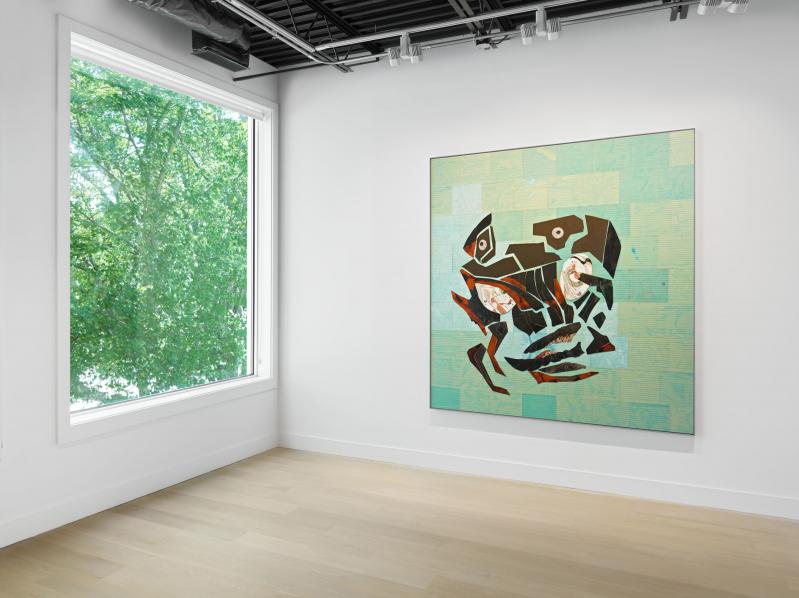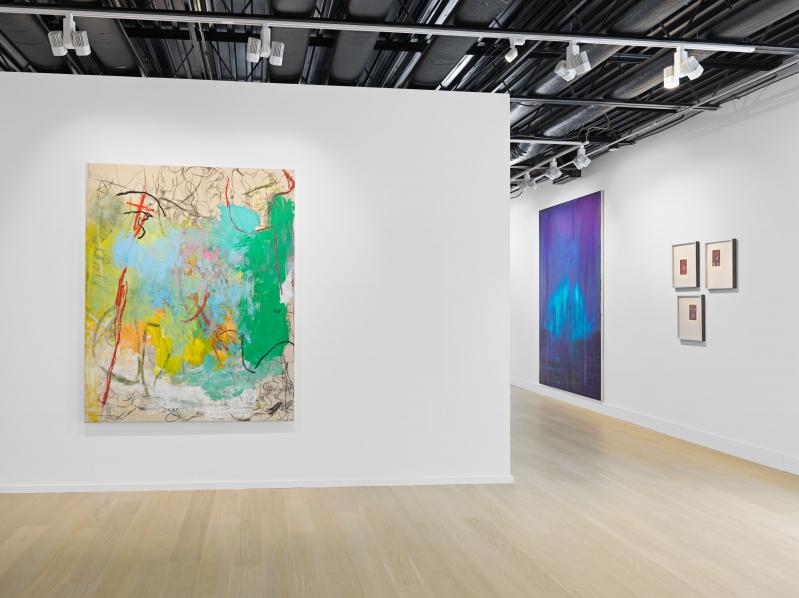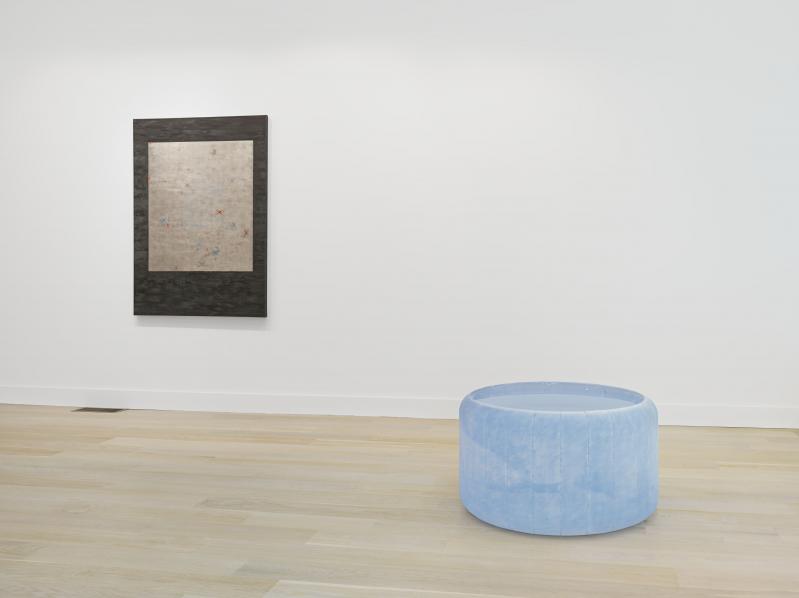Hauser & Wirth confirmed the arrival of an international gallery powerhouse on Southampton's Main Street with a striking yet restrained sign out front and the installation of sleek and playful sculptural benches by Louise Bourgeois in the green space behind it.
"Eye Benches II" have a "very nice, approachable feeling," Marc Payot, the president of the gallery, noted during a recent tour of the space. "We wanted to have a link to the community from the outside and not just be in our space by appointment only” for the time being due to health concerns and government restrictions. “We want to be inviting." They sit between the back of the gallery and the Southampton Arts Center, helping form a visual link between the two.
Inside the gallery's two floors, there is a collection of internationally known artists, many of whom have or had studios here or made studios in their basements after relocating here full time in March. On a recent day in August, there were several works by Rashid Johnson, George Condo, Mary Heilmann, John Chamberlain, Philip Guston, and Joan Mitchell. They were shown in combination with a variety of works by Bourgeois, Lorna Simpson, Jenny Holzer, Jack Whitten, Ed Clark, David Hammons, and Nicole Eisenman.

Greeting patrons at the front door is a one-ton solid glass sculpture by Roni Horn. Its ice-blue surface changes appearance depending on where the viewer is standing. "In the morning sun, it is magical," Mr. Payot said.
The art on view skews topical. Mr. Johnson has a piece inspired by the Black Lives Matter movement and the murder of George Floyd in May. Mr. Condo's dense drawing from this year evinces the oppression of being forced to stay at home for months at a time. The artist has not left his house in East Hampton since the beginning of the pandemic, according to Mr. Payot.
The gallery also emphasizes a number of African-American artists, with well-known and more recent discoveries. Clark, who died a year ago, is represented by two large abstract compositions created by pulling a broom across the canvas, in one case with sand mixed in the paint. Mr. Whitten's painting, from 1974, incorporates the squeegee technique developed several years before Gerhard Richter, according to the artist's estate.

"What's important is the daylight," Mr. Payot said. It was a reminder that the quality of light is not only important when the work is made, but also when we view it. It was originally placed downstairs on an interior wall, but upstairs in the rear window, the daylight brought the painting to life. A Piero Manzoni sewn piece is also made more memorable with its placement nearby.
Until the gallery can open with regular hours and actual exhibitions, each visitor receives a guided tour. This helps highlight what is special and meaningful about the current art on view, which rotates regularly.

Mr. Payot, who has a second, and lately primary, residence in Water Mill, said he is very pleased with where the gallery landed. He looked in several downtown areas, from East Hampton to Southampton, reflecting the geographical breadth of his clients here, but this location struck him as "a real space to present things, with a semi-public link to the street and semi-private. . . . The space is good enough to make the art look good."
Like many gallery owners from New York City, he didn't want to mix work with relaxation on the South Fork. He came from Switzerland 12 years ago with his family to open galleries on 69th Street and then 22nd Street. Weekend escapes out east soon followed. "We absolutely love it out here," he said. "We've always used it as a balance to the city," a time "to be with friends and family, really just have another life."
After several months in the digital realm, opening a place in the Hamptons close to clients has provided an opportunity to show them real art on actual walls. Mr. Payot said the clients love it and the staff does too. "Our New York team was ecstatic to have the opportunity to be in nature and build something specific and concrete."

"For us it feels so good to be in a physical space in front of real art after three or four months on Zooms," he said with a laugh. "Sometimes you have to rethink how you structure things. I can still have the relaxation, I just need to do it differently."
The gallery lease is for a year, but it's likely to be extended. "This crisis has changed us in many ways, but also in relationship to how we will spend time in the city and in the country." People see how much better the quality of life is here and want to spend more time here, "so it makes a lot of sense for us to stay, at least in the summer."
A previous version of this article misspelled David Hammons's name. It has also been modified to reflect Jack Whitten's earlier adoption of the squeegee in his painting.




